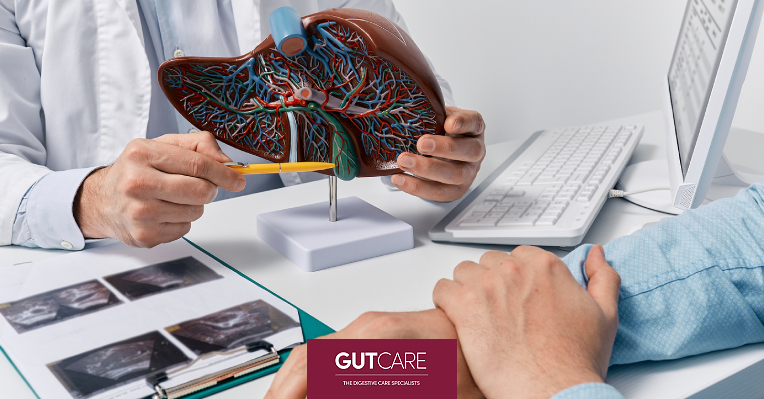Liver Cirrhosis And How Medical Nutrition Therapy Can Help

Cirrhosis is a severe liver condition where permanent damage and scarring of the liver take place. Usually diagnosed as a late-stage liver disease, the liver’s scarred tissue replaces healthy tissue, preventing the liver from functioning normally.
Several liver conditions and diseases can result in cirrhosis, such as chronic alcoholism and hepatitis, damaging healthy liver cells and resulting in inflammation and cell death. The scarred tissue is part of the body’s attempt to repair any damage.
However, as cirrhosis worsens, more scarred tissue develops. Eventually, repeated scarring leads to the blockage of blood flow into the liver, slowing its ability to process natural toxins, drugs, hormones, and nutrients. Repeated scarring also lowers the production of liver-related substances, such as protein.
Cirrhosis-related damage cannot be undone. However, any further damage can be reduced if diagnosed and treated early. If not, late-stage cirrhosis can be life-threatening.
Cirrhosis can impact anybody. However, you are more likely at a higher risk of developing the liver condition if you:
- Have viral hepatitis: Not everybody with chronic hepatitis will end up having liver cirrhosis. However, it is the leading cause of cirrhosis. In fact, chronic hepatitis B is the most common cause of cirrhosis in Singapore.
- Suffer from obesity: Being overweight raises your risk of developing cirrhosis-related conditions, such as non-alcoholic steatohepatitis and non-alcoholic fatty liver disease.
- Chronic alcohol abuse: Excessive consumption of alcohol raises your risk of developing liver cirrhosis.
Symptoms of cirrhosis
The issue with cirrhosis is that it is often undetectable until the damage becomes severe, and often then, it becomes too late. However, when symptoms do occur, they include the following:
- Easily bruising or bleeding
- Nausea
- Sudden weight loss
- Jaundice
- Spider like blood vessels on the skin
- Non-menopausal-related loss or absence of periods for women
- Gynecomastia, testicular shrinkage, or reduced sex drive for men
- Fatigue
- Sudden loss of appetite
- Oedema
- Itchy skin
- Ascites
- Slurred speech, drowsiness, or confusion
Is cirrhosis cancerous?
Liver cirrhosis is not cancerous. However, cirrhosis could be a sign of liver cancer. In fact, if you are diagnosed with cirrhosis, you have a higher risk of developing liver cancer. Additionally, if you have hepatitis C or B, you also have a higher risk of developing liver cancer, as they often result in liver cirrhosis.
In fact, most liver diseases or conditions lead to cirrhosis, which then increases your risk of developing liver cancer. So, even without the development of cirrhosis, if you have hepatitis or fatty liver symptoms, you are already at a higher risk of developing liver cancer.
Causes of cirrhosis
As mentioned several times earlier, a wide range of liver conditions and diseases can result in liver damage, which increases your risk of developing liver cirrhosis. Some of them include:
- Ongoing viral hepatitis B, C, and D
- Hemochromatosis
- Destruction and obstruction of the bile ducts as a result of primary biliary cholangitis
- Wilson’s disease
- Alpha-1 antitrypsin deficiency
- Chronic alcohol abuse
- Non-alcoholic fatty liver disease
Potential cirrhosis-related complications
Liver cirrhosis can lead to many potential complications. Because cirrhosis is often unnoticeable until it is often too late, some of these complications may be the first noticeable symptoms or signs to look out for.
- Portal hypertension: One of the most common severe complications, portal hypertension, is high blood pressure in the veins that supply the liver. Cirrhosis slows the blood flow, increasing pressure in the veins, causing the veins to burst and cause severe internal bleeding.
- Hypersplenism: Also known as an abnormal spleen enlargement, hypersplenism is often caused by portal hypertension, which results in the spleen trapping platelets and white blood cells.
- Malnutrition: The liver is one of the major organs that helps to process nutrients. As such, a liver damaged by cirrhosis reduces its primary function significantly, leading to sudden weight loss and weakness.
Diagnosing cirrhosis
Individuals with early-stage liver cirrhosis often do not display any symptoms. Usually, the condition is detected through a routine health check-up or blood test. As such, we highly recommend you conduct regular gastroenterology appointments to ensure that you do not have to suffer from late-stage conditions or diseases.
To diagnose cirrhosis, a combination of imaging and laboratory tests are usually conducted. At the clinic, the doctor will examine you physically, looking for the physical symptoms and signs mentioned above. If cirrhosis is suspected, the doctor will order a blood test where your blood count will be measured. Some other tests that might be conducted to confirm the diagnosis are imaging tests, such as ultrasound, Fibroscan, CT scan, and MRI, as well as a biopsy.
Treatment for cirrhosis
At this point, there is currently no cure for liver cirrhosis. Whatever damage that has been done to your liver is permanent. However, some actions to reduce the worsening of the condition include stopping alcohol consumption, having a well-balanced, low-fat diet, as well as avoiding certain medications. Additionally, the doctor will also treat the underlying cause such as hepatitis B or C.
One of the more popular treatment processes for liver cirrhosis in Singapore is medical nutrition therapy. Basically, by working with a dietitian, the individual will learn how to modify their diet to manage their cirrhosis, especially if they, too, suffer from complications, such as ascites and poor appetite. Things such as identifying sources of diet nutrients that affect cirrhosis, controlling fluid and salt intake, eating out and meal preparation, as well as suitable types of nutritional supplements, are usually covered in the therapy session.
The aim of medical nutrition therapy is to help individuals understand their condition, equipping them with vital nutrition information to manage their symptoms and optimize their nutrition intake, preventing additional weight, fat, and muscle loss.
Conclusion
The medical field is constantly evolving and finding new ways to detect and treat undetectable conditions and diseases. Until then, cirrhosis can only be approached through increased gastroenterology screening and lifestyle modifications if started early. At GUTCARE, we specialise in a variety of digestive-related conditions and diseases, from major ones such as colon cancer to minor ones such as diarrhoea and piles. Protect your gut health with the help of GUTCARE.
Click here to make an appointment with us today!
Reference:

HAVE AN ENQUIRY?
You may also send in an enquiry via our online form if you have questions pertaining to your visit or consultation.

FIND OUT MORE ABOUT OUR DOCTORS
Unsure of which doctor to speak to? Take a look at our doctors’ profile to find out more.




